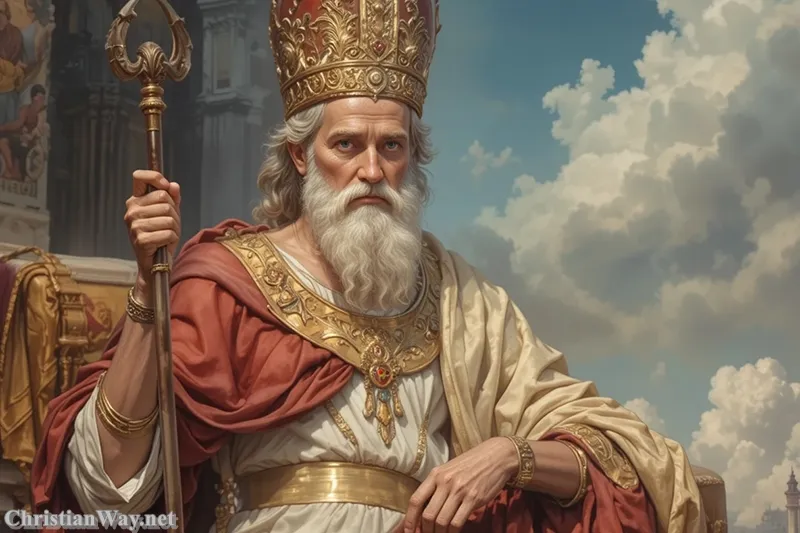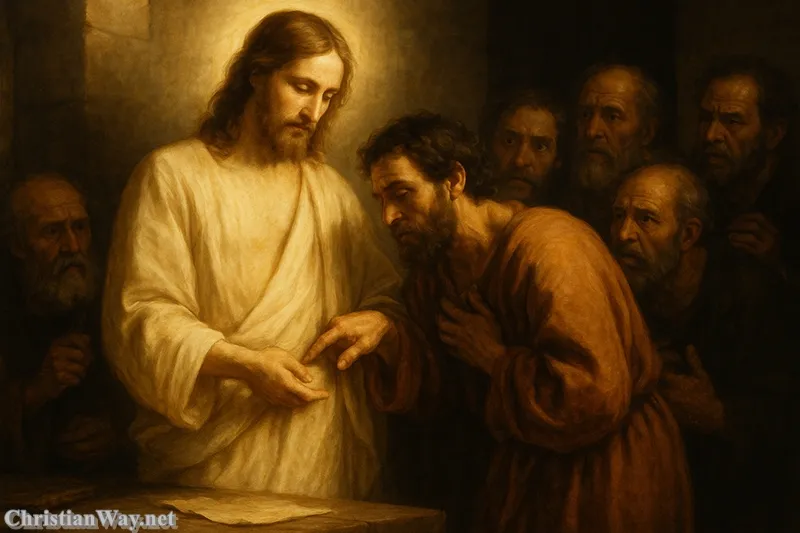Every Christian, at some point in their journey, must confront the mystery and beauty of the woman who said “yes” to God — the Virgin Mary. Her name alone evokes tenderness, humility, and reverence. Across the centuries, she has been called Theotokos (God-bearer), Mother of the Church, Blessed among women, and the humble handmaid of the Lord. Yet, while she stands at the center of the story of salvation, Christians understand and honor her in different ways.
Dear friends in Christ, as we turn our hearts toward Mary, we are not entering into division but into contemplation. For through her, we glimpse what it means to receive God’s Word fully, to allow grace to dwell within us, and to say — even through fear — “Let it be done unto me according to your word.” In her life, the mystery of divine love becomes visible in human form.

In this reflection, we will journey through how various Christian traditions — Catholic, Orthodox, Anglican, and Protestant — have understood the Virgin Mary. We will see not only the theological differences but also the shared love and awe for the woman who bore Christ. Above all, we will see in Mary a mirror of the Church and a sign of what it means to be faithful.
The Virgin Mary in Scripture: The Humble Servant of the Lord
Before we explore tradition, we must begin with Scripture itself. Mary’s story unfolds quietly but powerfully through the Gospels.
When the angel Gabriel appeared to her in Nazareth, she was a young woman of no status, yet heaven called her “full of grace.” Her response — “Behold, I am the handmaid of the Lord; let it be to me according to your word” (Luke 1:38) — opened the way for the Incarnation, for God to become flesh among us.
In her visit to Elizabeth, Mary proclaimed the Magnificat, that song of revolutionary grace: “My soul magnifies the Lord, and my spirit rejoices in God my Savior.” She saw the hand of God lifting up the lowly, scattering the proud, filling the hungry, and remembering His mercy.
Mary’s faith continued to the Cross, where she stood in silence beside her Son, sharing in His suffering and love. And after the Resurrection, she remained with the disciples in prayer, waiting for the coming of the Holy Spirit (Acts 1:14).
Thus, before any doctrine or devotion, Mary stands as the first disciple — the one who listens, believes, and remains steadfast.
Mary in the Catholic Tradition
The Mother of God and the Mother of the Church
In Catholic theology, Mary is honored as Theotokos, the “God-bearer,” affirming that the One she bore is truly both God and man. This title, defined at the Council of Ephesus in 431, safeguards the mystery of the Incarnation. To call Mary the Mother of God is not to exalt her above Christ, but to affirm who Christ truly is.
Catholics also recognize Mary as the Mother of the Church, for as she gave birth to Christ, the Head, she also spiritually nurtures His Body — the faithful. Her maternal care is not abstract; it is deeply personal, extending to every believer.
Immaculate Conception and Assumption
Two dogmas further express her unique role in salvation history: the Immaculate Conception — that Mary was preserved from original sin from the first moment of her conception — and the Assumption, that she was taken body and soul into heavenly glory.
These teachings flow not from human sentiment but from the logic of grace. If God prepared a pure dwelling for His Son, then Mary’s holiness was not her own achievement but God’s prevenient grace. The Assumption, in turn, proclaims the destiny of all who are united to Christ — to share in the resurrection of the body.
Marian Devotion
Catholic devotion to Mary — through the Rosary, feasts, and titles — does not replace Christ but leads the faithful more deeply to Him. Every “Hail Mary” ends with the prayer, “pray for us sinners, now and at the hour of our death.” It is an act of humility, not idolatry — a request for intercession from one who is most united to Christ.
Saint Louis de Montfort wrote, “To Jesus through Mary.” That simple phrase captures the Catholic spirit: Mary does not stand between us and Christ but accompanies us toward Him.
Mary in the Orthodox Tradition
The Theotokos: Mystery and Glory
In the Eastern Orthodox Church, the title Theotokos is not just doctrinal — it is mystical. The Orthodox venerate Mary as the living Ark of the Covenant, the bridge between heaven and earth. Icons of the Mother of God are not mere art but windows of theology, showing her always pointing to Christ.
Mary is the symbol of humanity transfigured by divine grace. In her, Orthodoxy sees the fulfillment of theosis — the process of becoming partakers of the divine nature (2 Peter 1:4).
Feasts and Liturgical Life
Every Orthodox liturgy is filled with hymns to the Theotokos: “It is truly meet to bless you, O Theotokos, ever blessed and most pure, and the Mother of our God.” The Orthodox Church celebrates her feasts — such as the Annunciation, the Nativity of the Theotokos, and the Dormition — as moments of deep theological beauty.
The Dormition of the Theotokos, parallel to the Catholic belief in the Assumption, celebrates her falling asleep in the Lord and her being received into glory. It is not defined as dogma but lived as mystery — a quiet proclamation that holiness conquers death.
Mary and the Mystical Life
For the Orthodox Christian, Mary is the model of hesychia — interior stillness before God. Her life was one of silent contemplation, inner prayer, and total obedience. In icons, she is often portrayed with a calm, radiant face, her eyes both sorrowful and serene.
Through her, the Orthodox faithful learn the path of humility, silence, and divine indwelling.
Mary in the Anglican Tradition
The Balance of Scripture, Tradition, and Reason
Within Anglicanism, reverence for Mary has been retained in many branches of the tradition, especially among Anglo-Catholics. The Book of Common Prayer remembers her in the Magnificat and the Collects, and many Anglicans celebrate the feasts of the Annunciation, the Visitation, and the Blessed Virgin Mary.
Anglicans often approach Marian devotion with careful balance: honoring her as the Mother of the Lord and as the first disciple, while ensuring that all devotion points to Christ.
Mary as Model of Obedience and Grace
In Anglican theology, Mary’s fiat — her “yes” — is seen as the supreme example of obedience to the Word of God. As the Rev. John Donne once wrote, “She who was God’s house, was His guest.” Her life becomes the pattern for all believers: to hear, believe, and live the Word.
Anglican spirituality also recognizes Mary as a sign of God’s mercy to the lowly and forgotten. Her Magnificat is often sung daily in Evening Prayer, echoing through centuries as a hymn of justice and divine compassion.
While some Anglicans may pray the Rosary or honor Mary through pilgrimages (such as to Walsingham), others may express devotion through Scripture reading and song. What unites them is the recognition that Mary embodies faith’s purest form — trust in God’s promise.
Mary in Protestant Traditions
The Focus on Christ Alone
Among Protestant communities, Mary is honored as the faithful mother of Jesus, but devotion to her is generally limited to what Scripture directly reveals. The emphasis falls on Christ alone as mediator and Savior, in keeping with the principle of solus Christus.
Reformers like Martin Luther and John Calvin held deep respect for Mary. Luther even wrote, “Mary is the highest woman and the noblest gem in Christianity after Christ.” However, both rejected later Catholic developments that seemed to elevate Mary beyond biblical witness.
Mary as Example of Faith
For Protestants, Mary’s significance lies in her faith and humility. She heard God’s Word, believed it, and lived it — a model for all Christians. In sermons and songs, she is remembered as a woman of courage, chosen not for her status but for her trust.
The Magnificat remains a treasured passage in Protestant worship, reminding believers that God exalts the humble and brings His kingdom in unexpected ways.
Recovering a Marian Sensibility
In recent years, many Protestant theologians have sought to recover a deeper appreciation for Mary — not in terms of new devotions, but in recognizing her unique role in salvation history. They see in her a witness to grace, an image of discipleship, and a prophetic voice for the poor and the meek.
As one contemporary Protestant theologian put it: “To honor Mary rightly is to let her lead us to Jesus.”
A Shared Love Beyond Division
Though history has divided Christians in how they speak of Mary, the heart of her story unites us. Whether she is called Theotokos, Mother of the Church, or simply Blessed Mary, she is the same woman who bore Christ in her womb and pondered His mysteries in her heart.
In her humility, she shows us how to receive God’s Word. In her courage, she shows us how to stand beneath the Cross. In her faith, she shows us how to wait for resurrection.
Perhaps, in learning to see Mary as the first believer — the first to carry Christ into the world — we might also learn how to carry Him ourselves, with gentleness and grace.
In the Light of Christ
Dear friends, to honor Mary is to honor the God who chose to dwell among us. She does not draw attention to herself but to the One she bore. Her whole life is a mirror turned toward heaven, reflecting divine light upon the world.
Let us therefore love her rightly — not as a rival to Christ, but as His most faithful witness. And let her prayer become ours: that the Word might take flesh again in our lives, transforming us from within.
May her example teach us humility, courage, and unwavering faith. And may her intercession — where it is believed and where it is silently trusted — draw all Christians closer to the heart of her Son.
“My soul magnifies the Lord, and my spirit rejoices in God my Savior.” — Luke 1:46–47
May the Virgin Mary, Mother of Jesus, teach us all to magnify the Lord with our lives.
— Fr. John Matthew, for Christian Way





